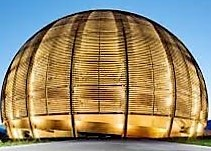Speaker
Description
Precise nuclear data is extremely important for several scientific applications, ranging from the calculation of reaction rates for the description of galactic events, to the evaluation of the toxicity of nuclear waste. As it was recently shown, the re-evaluated half-life data of a considerable number of radionuclides (e.g., Fe-60 [1], Se-79 [2, 3], and Sm-146 [4]) was in substantial disagreement with previous values. In particular, the shorter measured half-life for 146Sm entails a higher abundance of this radionuclide in the early Solar System, and thus, planetary events dated with the Sm-146/Nd-142 chronometer converge now to a shorter time span than previously estimated. This value is still awaiting for confirmation. At present, there is no agreement on which half-life value for Sm-146 has to be adopted for derivations and calculations using the Sm-146/Nd-142 radiometric pair. Similarly to the Sm-146 case, the currently available half-life data of other radio-lanthanides Gd-148 and Dy-154, important for the evaluation of p-process reactions, are inconsistent or affected by uncertainties even up to 50% [5, 6].
In the framework of the “ERAWAST - Exotic Radionuclides from Accelerator Waste for Science and Technology” [7] initiative, we obtained exotic Sm-146, Gd-148, and Dy-154 from the reprocessing of radioactive materials already available at the Paul Scherrer Institute site. The development of a state-of-the art radiochemical separation allowed us to attain extremely pure fractions of the mentioned elements, in sufficient amounts for half-life measurements. The latter proceeded by applying the “direct” method, which consists on the determination of the number of atoms of interest, combined with the measurement of their activity.
Here, preliminary results on the measured half-lives of Sm-146, Gd-148, and Dy-154 with unprecedented low uncertainties, will be presented.
Acknowledgement
This project is funded by the Swiss National Science Foundation (SNF grant no 200021-159738).
[1] Rugel G., et al. 2009. Physical review letters, 103, p. 072502. [2] Jörg G., et al. 2010. Applied Radiation and Isotopes, 68, pp. 2339-2351. [3] Bienvenu P., et al. 2007. Applied Radiation and Isotopes, 65, pp. 355-364. [4] Kinoshita N., et al. 2012. Science, 335, pp. 1614-1617. [5] Nica N., et al. 2014. Nuclear Data Sheets, 117, pp. 1-229. [6] Reich C. W. 2009. Nuclear Data Sheets, 110, pp. 2257-2532. [7] Schumann D., et al. 2007. Journal of Physics G: Nuclear and Particle Physics, 35, p. 014046.




